After our dog Emily died on June 28, 2012, I drifted in a grief cloud for many months. But two positives emerged from that period: I started attending the annual Write on the Sound conference in Edmonds, and I became a volunteer at Woodland Park Zoo. Both experiences have enriched my life in more ways than I can count. If you are considering ways to give back to the Seattle community and you love animals, join me on a virtual volunteering tour to see how to do the Zoo for a brand new you.
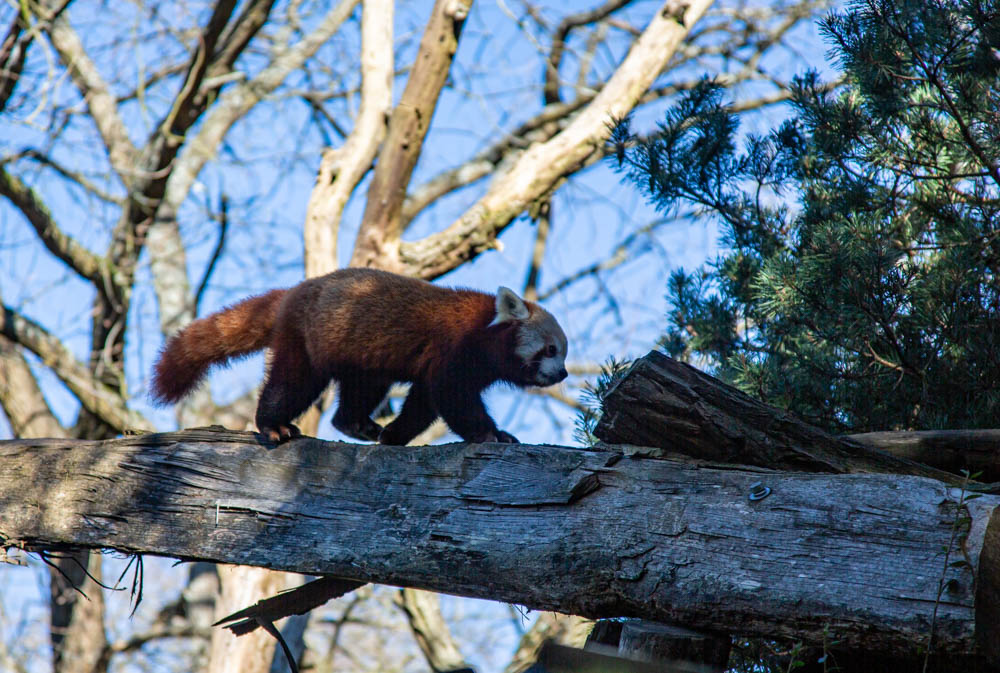
Do the Zoo: Animal Watches
One of my favorite shifts this past year since the Zoo has invited volunteers back has been participating in animal watches. On a watch, volunteers spend several hours with a particular animal or group of individuals, noting every five or ten minutes what they’re doing. While my Animal Unit Volunteer (AUV) position helping with the giraffes remains closed, I’ve shifted time to animal watches.
I’ve won lottery shifts for three different animal watches: Alpine keas, Komodo dragons, and Colobus monkeys. All three animals are in exhibits I don’t often visit. Spending time with them teaches me more about their natural behavior and provides details and stories I then share with guests.
Komodo Dragons
I’ve been fortunate enough to see Barani and Nakal, the two Komodo dragons, climb the walls in their new exhibits and dig in their sand pits. These endangered lizards only live in a very small region in Indonesia, on Komodo Island and Flores Island. The biggest threat to these impressive reptiles? Man encroaching on their territory and poaching their food sources.
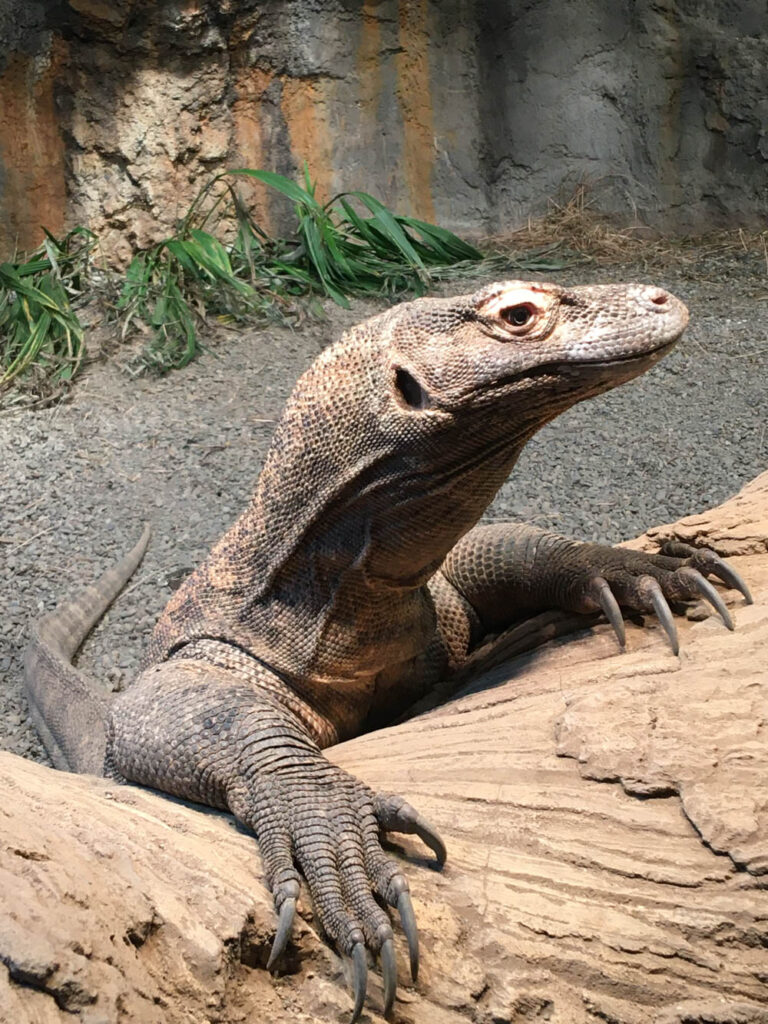
Keas
The Zoo has four Keas who often blend in with the olive green surroundings of their exhibit. Only through standing in front of their exhibit, listening to the birds call to each other, and watching closely have I been able to learn where their favorite spots are inside their exhibit. Patience pays off! They are tricky to photograph at the Zoo, however, without getting mesh between camera and kea. I’ve seen two during a visit to New Zealand’s South Island.
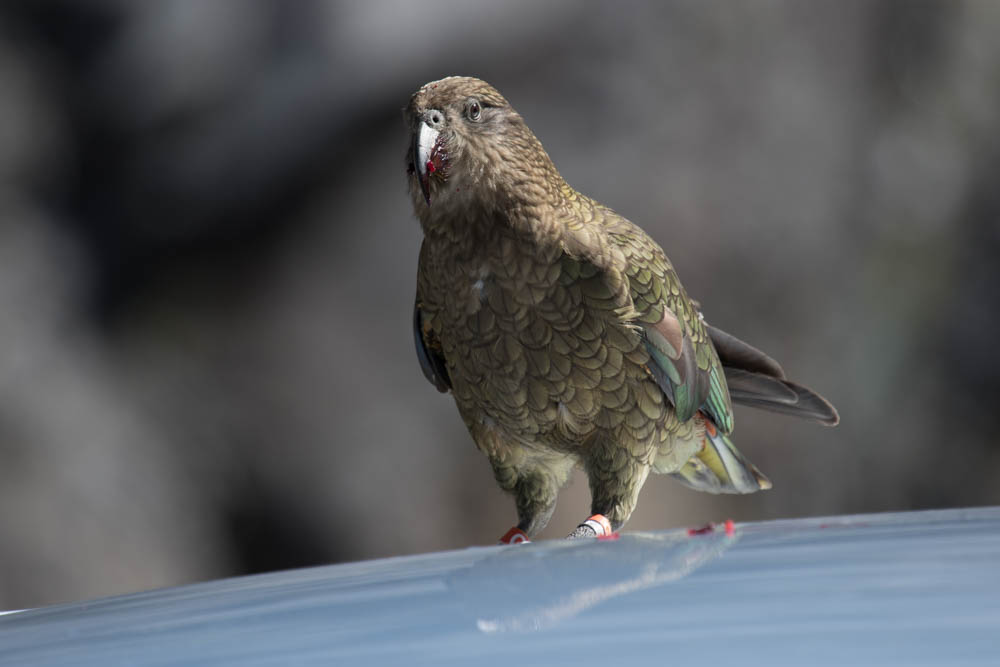
Colobus Monkeys
These black-and-white, long-tailed monkeys native to Africa live near the gorilla exhibit. During a recent watch, guests commented most often about their long, white, bushy tails and skunk-like coloring. Animal keepers trained Blondie (pictured), Grabby, and Lewis, the newest member of the family.
Sometimes animals are named after keepers, or receive names in their native language. Blondie has white hair on her toes. Grabby likes to take food from Blondie.
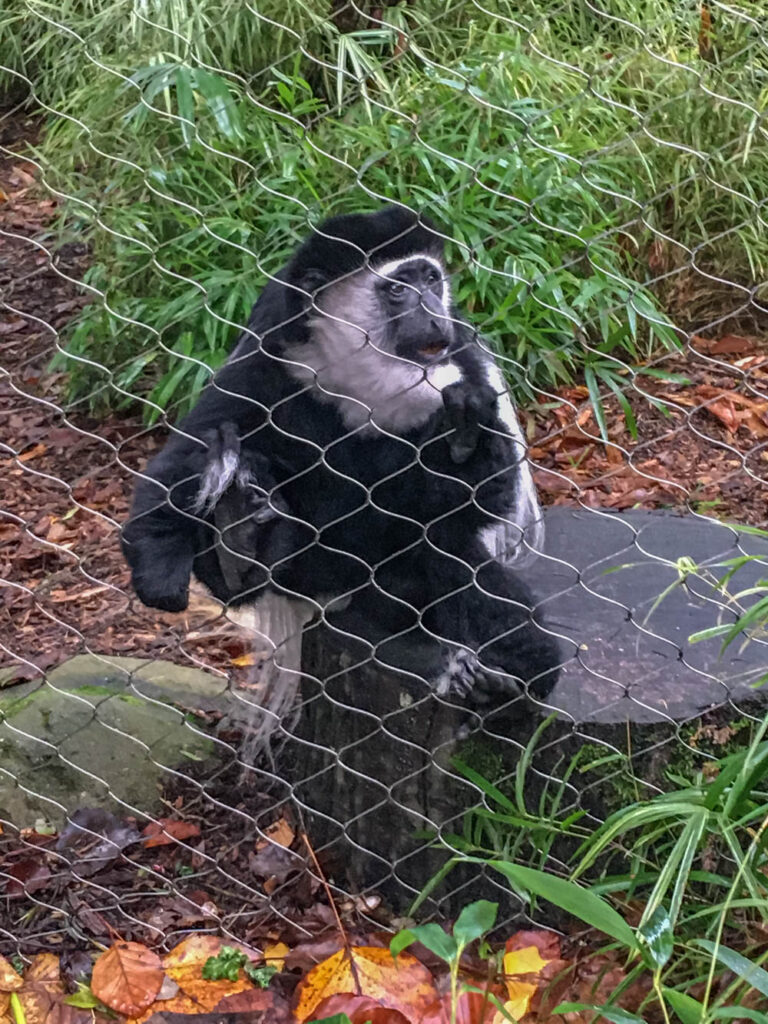
Volunteer with Horticulture
In July 2021, I accepted a temporary six-month Horticulture shift on Thursdays mornings, the day I used to help on the savanna. Until Labor Day, I helped water the ferns and new plants in the Dinosaur Discovery loop, a temporary exhibit in the south part of Zoo grounds near the Family Farm.
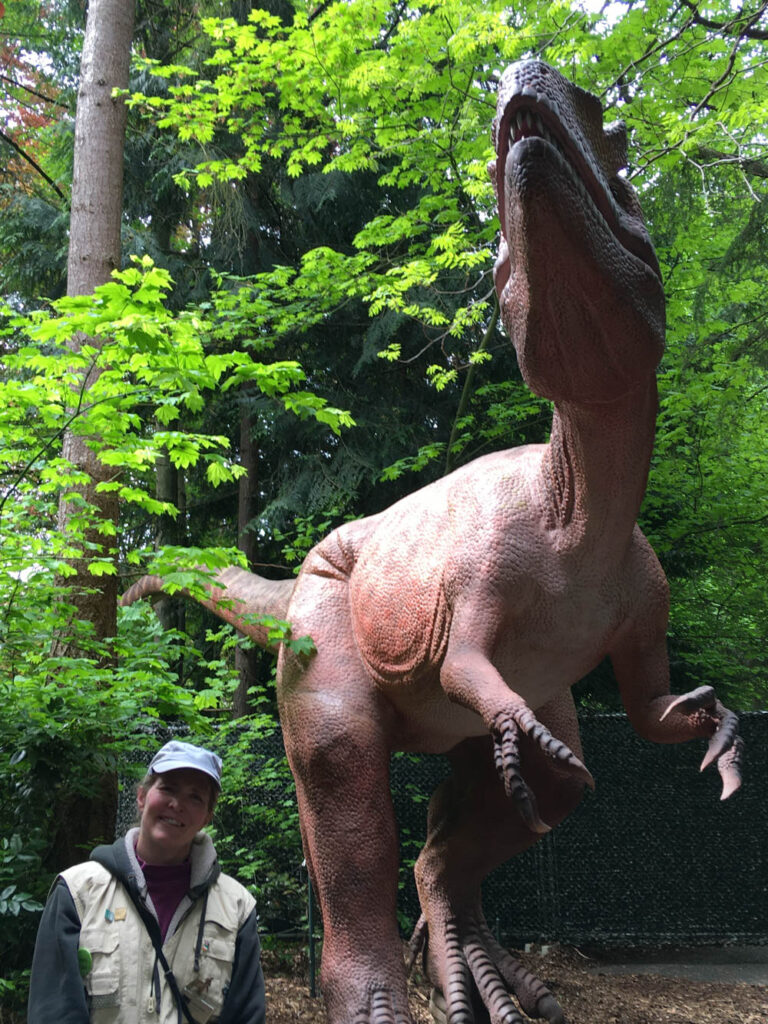
Once the Zoo grounds opened at 9:30, we moved on to other tasks. We cut browse (another word for snack plants) at nearby Greenlake for all the herbivores. One shift included arranging flowers for Jungle Party, the Zoo’s annual fundraiser. Other shifts I helped rake, prune, transplant plants, and more. A side benefit of volunteering with Horticulture was asking questions about gardening from one of the best in the business.
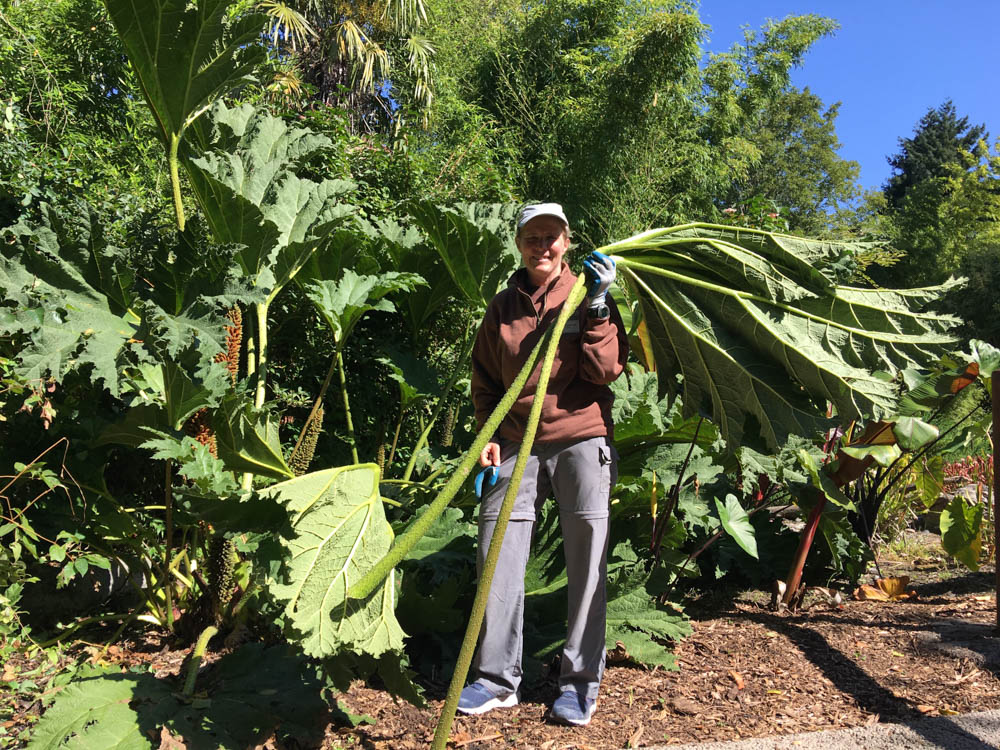
Another benefit is accessing behind-the-scenes areas off-limits to the general public. These adorable goslings peeked through the fence at us, hoping for attention. Seeing all the areas the public does not gives me a much greater appreciation of all that the Zoo staff does to run such a highly esteemed facility.
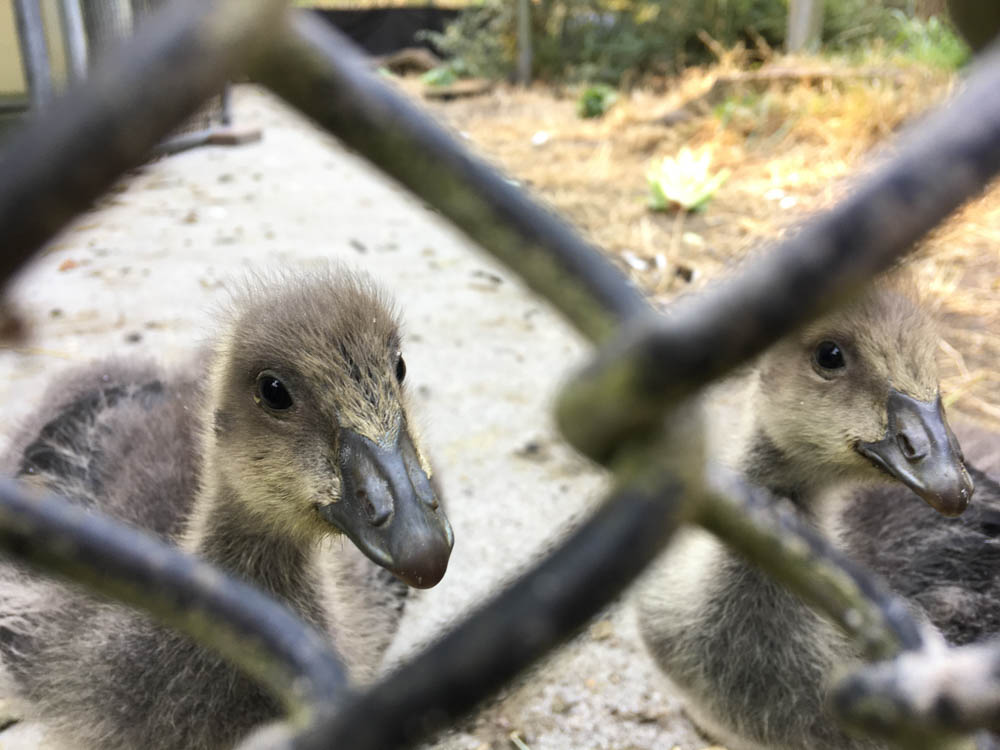
Do the Zoo: Wildkeepers
During my eight years as a volunteer, one of my favorite shifts is as a Wildkeeper, what we in brown sweatshirts (volunteer colors) lovingly refer to as glorified Zookeepers without benefits. Sweeping, shoveling, raking, laying gravel — you name it, Wildkeepers do it.
Not only do we get a great workout, but after every several-hour shift of manual labor, we receive our own enrichment, a close encounter with a select “animal of the day.” Following several hours of raking in October, I fed apple pieces to the de-scented skunk, Harry, and I met Jibini, the Milky Eagle Owl, who hatched January 28, 2020.

Animal Visibility Watch
This shift may be my favorite during COVID times. For each two-hour shift, volunteers visit twenty animals who live scattered throughout the zoo. We spend up to a minute looking for each animal, roughly the time guests spend looking before they move on. We simply mark whether we saw the animal (s) before continuing.
Australasia
I took the following shots during my AV watches. Wallaroos and Wallabies are smaller cousins of kangaroos. They live in the Zoo’s Australasia exhibit. I’ve been fortunate enough to see their larger cousins, the kangaroos, in their natural habitat in Australia. They’re high on my list of animals to learn more about whenever they have another watch.
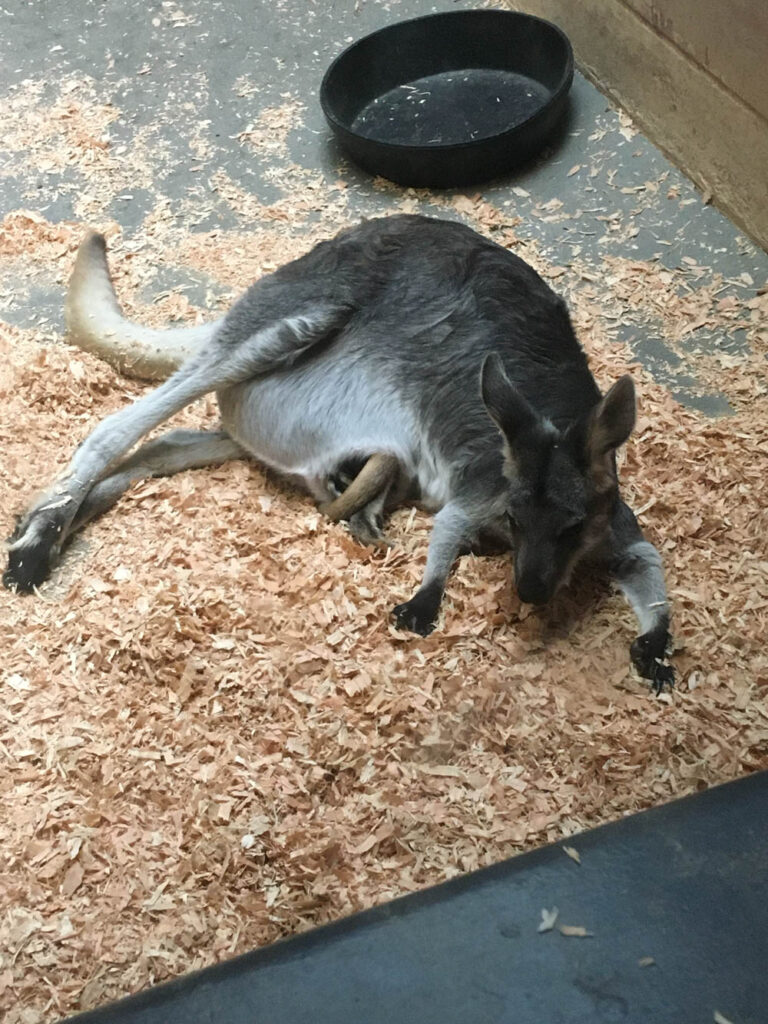
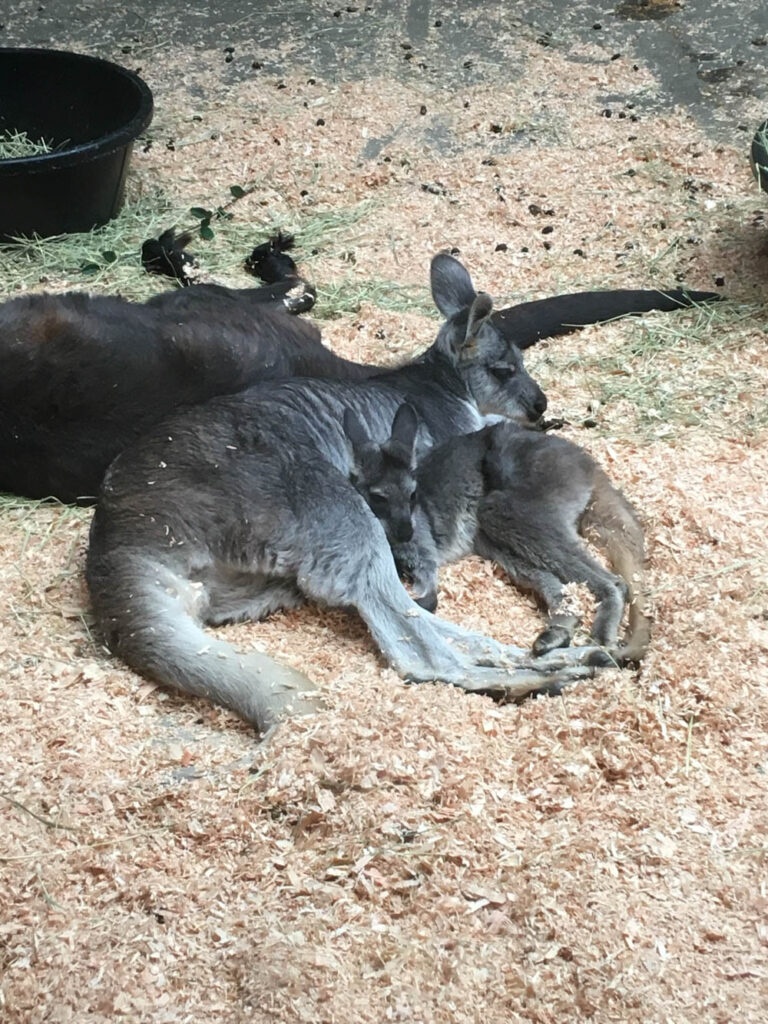
Assam Rhino Reserve
Another animal I’ve enjoyed learning about this year is the greater one-horned rhino. Many visitors ask if Glenn and Taj are brothers. They were born a day apart, in different zoos. Both boys turned five this month and will remain permanent residents at the Zoo. They have been in the former elephant exhibit since spring 2018.

Northern Trail
The Northern Trail opened this spring with plans to include lynx in the near future. Zeus, the male mountain goat, was translocated from Olympic National Park several years ago. He and Atlin fathered a new female kid on July 16. I have yet to get a good shot of her up close but this link will give you a great view!

Animal Unit Volunteer
I would be remiss if I didn’t include at least a short mention of the heart and soul of volunteering, in my mind: getting to directly help animals. In my role for more than two years as an Animal Unit Volunteer (AUV) within the savanna, I got to spend time near baby Hasani (meaning handsome, in Swahili) before he moved to Merkel, TX.
I arrived for my shift the morning he was born, and I cried when I saw how difficult it was for him to stand. He had a condition called hyperextended fetlocks. Fortunately, an equine vet was in town and helped outfit Hasani with custom shoes to support him until he grew strong enough on his own.
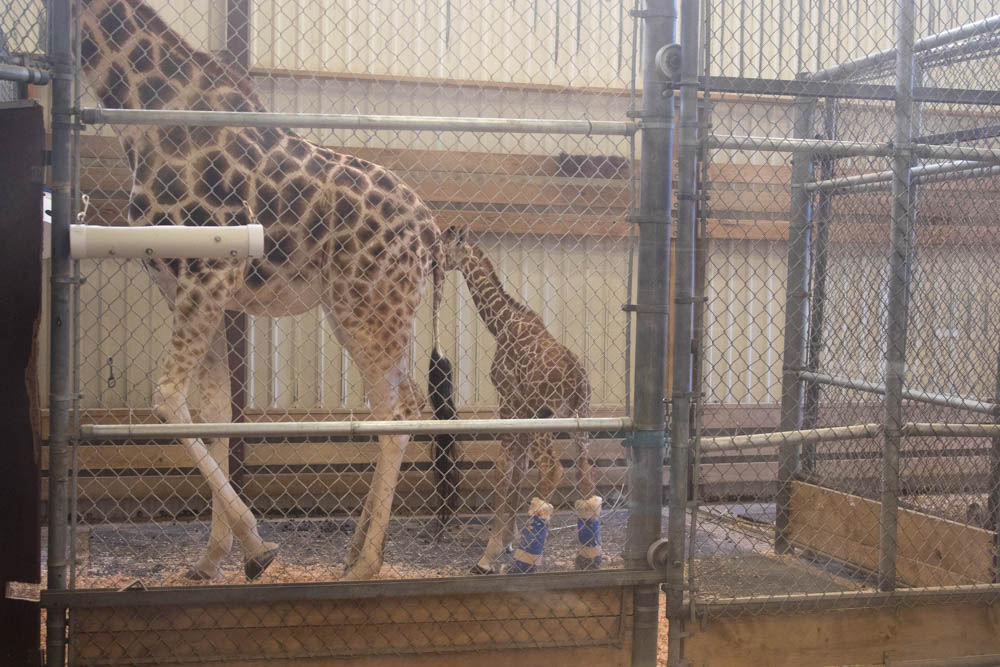
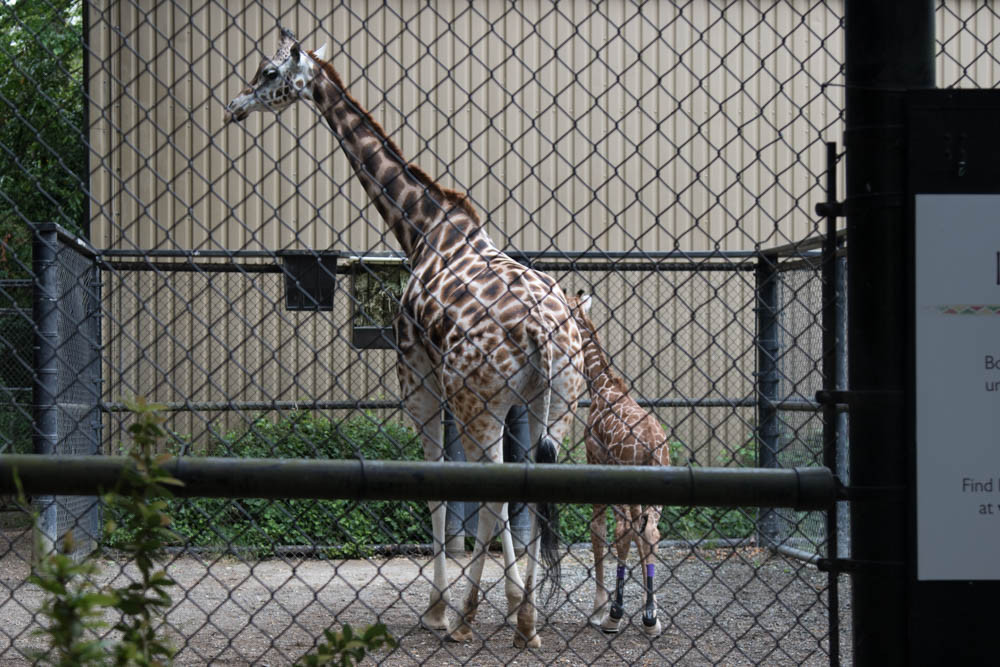
Unfortunately, I never got to say goodbye to Hasani. The Zoo remained closed to volunteers when keepers moved him to his new home. But I have fond memories of looking directly up at Dave, Hasani’s dad, as he chewed on browse in the stall next to the one I cleaned. All Zoo animals are amazing. Do you have a favorite?
I am within four shifts of reaching a thousand hours of volunteerism at the Zoo. Is volunteering in your future? What I’ve covered in this post is only a small fraction of the many possibilities. Once COVID restrictions change, even more opportunities will open up. Perhaps you, too, can do the Zoo for a brand new you.


I think I made a mistake showing this post to my wife… she is now packing her bags and entering the Woodland Park Zoo’s address in her smart phone’s navigation app – Help!
Not too surprising as she has spent a very large part of her life so far taking care of all sort of creatures: volunteering for animal rescue orgs., managing farms, taking in strays (including her husband), and perfecting her ‘creatures whisperer’ skills; I swear we cannot go anywhere w/o four legged things appearing out of nowhere and making a beeline for her!
I am curious: did any of your volunteering experiences at the Woodland Park Zoo translate into new insights or observations about wildlife you occasionally encounter, or get a glimpse at, on your hikes? Did you get better at spotting wildlife for example? (Note: No, I do not expect you to provide anecdotes about running into rhinos or red pandas in the northern Cascades… 🙂 )
HA HA HA. Well, it sounds like I’ll just have to welcome her to the fold when she gets there. Hee hee.
You ask an interesting question. I think all my wildlife education (including at the zoo and ranger talks at various national parks over the past two decades) HAS given me some great tips which might make a good blog post. Yes, I get ideas from all of YOU posting here! Namely, what to do when you come in close contact with a bear (contrary to popular belief, bear bells seem to ATTRACT, not repel — something about the inhuman sound makes them curious. But calling loudly, “Bear, Bear, Bear” (see my earlier post about Granite Mountain from way back in July) and standing your ground (running makes them look at you like prey) is a much better plan. We carry bear spray in Grizz territory, but in my encounters in the Cascades, if I see scat or rub marks on trees or hear crashing in the woods I definitely make my presence known. They don’t want to have anything to do with us) and how when birding and looking for wildlife the best way to see animals is to SLOW DOWN and let them know you are not a threat. I could mention a third: animals, like people, have their favorite spots, and when at the Zoo spending quality time (say, on a watch) with each animal, you get to learn what they prefer. Similarly, when we’re in Yellowstone, we return to the same places, ideal habitat, at the right times for foraging, and get our cameras ready for the best shots.
Great question as always! Thanks!
Amazing way to volunteer. I love the new baby girl goat. I also love the owl. Great story!💖
Thanks, Silvie-Marie! I should always remember that a sure-fire way to bring myself out of the doldrums, even if weather doesn’t cooperate for a hike, is to visit the Zoo or at the very least revisit photos of visits. Just like it’s hard to be down when you have a pup licking your face, it’s hard to stay down when you’re seeing beautiful pictures. Cheers!